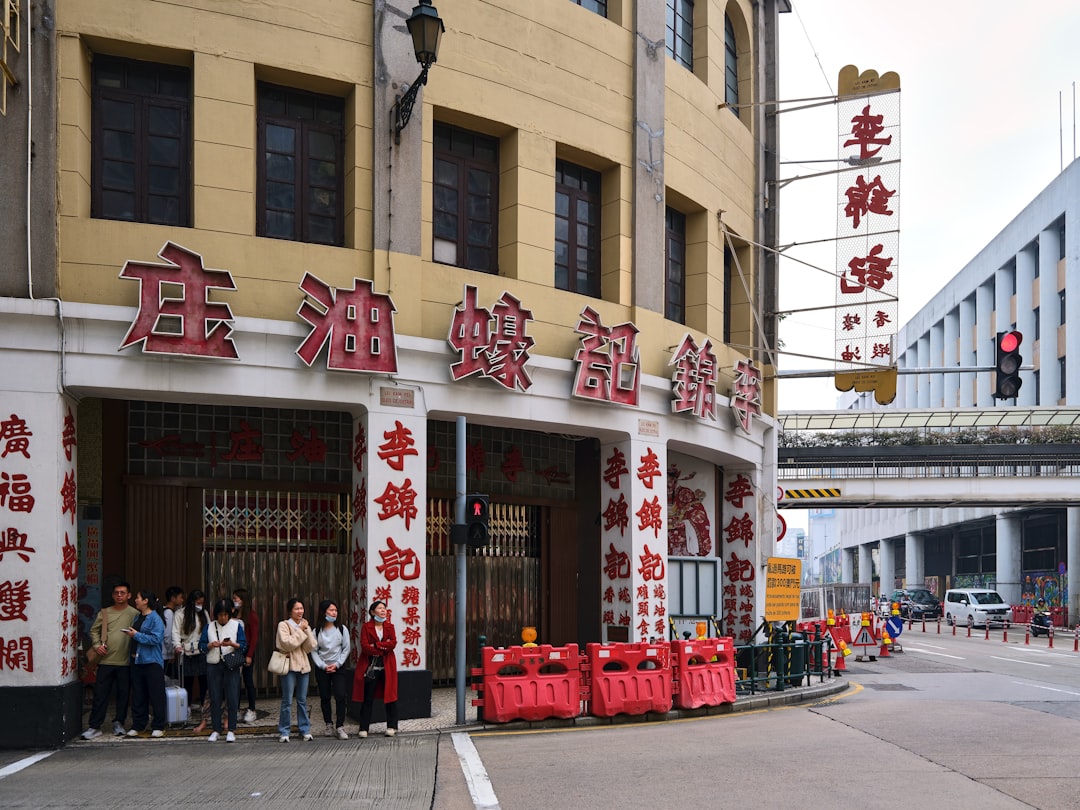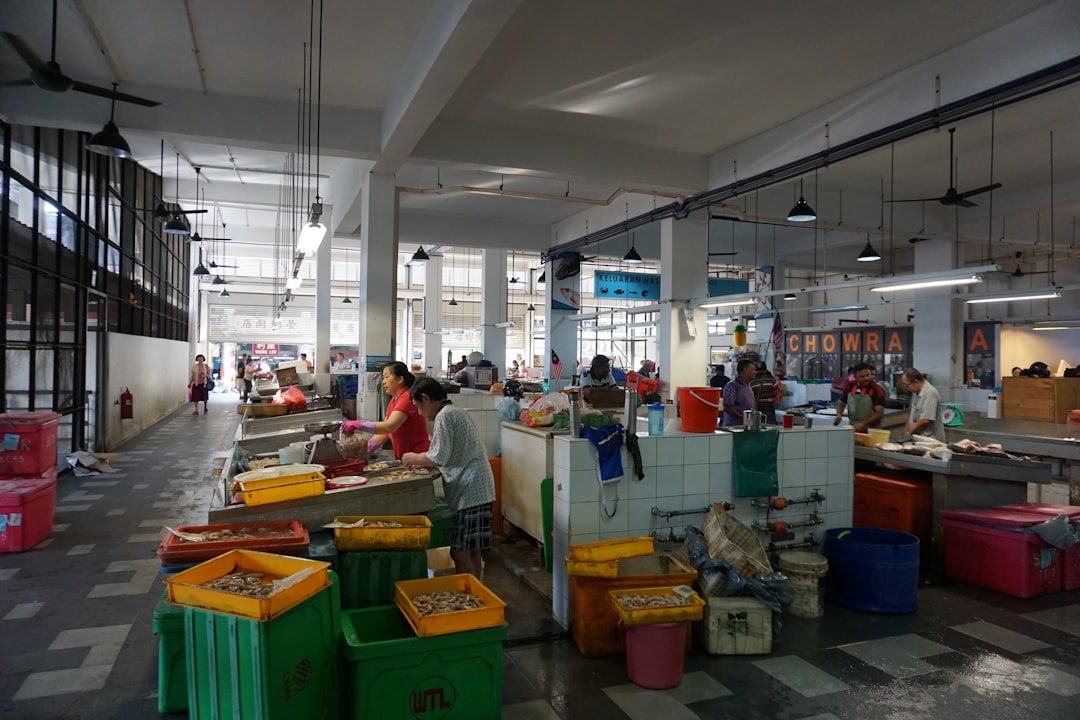

Engage prospects with a scan and streamline customer engagement with FREE QR code marketing tools by Sona – no strings attached!
Create a Free QR CodeFree consultation

No commitment

Engage prospects with a scan and streamline customer engagement with FREE QR code marketing tools by Sona – no strings attached!
Create a Free QR CodeFree consultation

No commitment
QR codes bridge the gap between physical touchpoints and digital outcomes, directly addressing the frustration of losing valuable customer input due to paper-based or verbal-only workflows. In many medical supply stores, feedback slips into a black hole when staff collect comments on paper, customers forget to fill out long forms later, or teams cannot tie insights to specific products, lots, or locations. By placing a QR code at the moment of experience, you give customers and clinicians a simple path to share feedback in seconds, while your team receives structured data.
The goal is not just to collect more responses but to collect better signals and route them to the right action quickly. Align QR placements with moments of high intent, such as on receipts at checkout, on prescription packaging, or on delivery slips. Use dynamic QR codes to allow iteration without reprinting, and track scans by product, location, and campaign. With a platform like Sona QR, you can centralize all codes, landing pages, and analytics so nothing falls through the cracks.
Modern platforms support these workflows with dynamic QR generation, mobile-optimized forms, analytics, and automation. Instead of waiting days to learn about a product issue or service gap, medical supply stores can capture and route insights in minutes, which is essential for both customer care and operational excellence.

Medical supply stores operate at the intersection of regulated products, complex service needs, and a deeply personal end user experience. Much of the engagement still happens offline: packaging at the counter, information sheets in the bag, or instructions taped to equipment. Without an easy offline-to-online bridge, critical input often remains anonymous or uncollected, weakening service recovery, obscuring product performance insights, and hiding cross-sell opportunities.
QR codes convert passive materials into interactive touchpoints. A receipt becomes a feedback form, a prescription label becomes a product info hub, and a shelf tag becomes a reorder and restock shortcut for staff. Because each scan generates traceable data, your team can finally see which products trigger questions, which stores need coaching, and which customers are primed for follow-up education or loyalty offers.
By inserting QR codes throughout the patient and provider journey, you create a holistic feedback loop, as outlined in Sona QR’s healthcare hub. Stores move from guessing at customer sentiment to acting on verified signals, finally connecting the dots between specific products, stores, and customer segments.

Feedback gains value when it is structured, timely, and linked to context. That starts with choosing the right QR formats and destinations for each moment. In medical supply, formats that connect customers to forms, product verification pages, and support channels are typically most effective. The key is to reduce friction: people scan once and land exactly where they need to go, with as little typing as possible.
Use dynamic QR codes as your default so you can edit destinations, A/B test pages, and analyze performance without reprinting. Static codes may still be useful for evergreen assets such as product info sheets or general contact pages, but they lack tracking and flexibility.
The goal is to match format to intent. If the task is to report a defect, send to a triage form. If the task is education, send to a mobile page with clear instructions and short videos. Reducing friction at each step increases completion rates and improves data quality.

Growth often hides in the moments where customers are already paying attention: at checkout, on the prescription label, or while opening a delivery. QR codes placed in these moments can turn a transactional touchpoint into a feedback, education, or loyalty touchpoint. The key is to design placements that respect the clinical context and feel like a helpful shortcut, not an intrusive ad.
Start by mapping your physical environment and customer journey. Identify the high-intent stops: the counter, the shelf where specialty items live, the equipment demo station, and the printed materials that accompany deliveries. Then pair each moment with a QR and a clear purpose so you build a reliable feedback and follow-up system.
When QR placements reflect your store flow, scan rates rise and your data becomes more representative. You also create a durable system that converts routine interactions into measurable improvements in service quality, operations, and revenue.

QR codes shine when they collapse time between a customer need and a useful action. In medical supply, that might mean helping a patient understand the safe operation of a device, enabling a caregiver to request support without waiting on hold, or letting staff flag low inventory in seconds. Each use case benefits from structured data capture, dynamic routing, and attribution to the right product or location.
Consider use cases across three categories: patient-facing, clinician and caregiver-facing, and staff-facing. Patient-facing codes often appear on packaging, receipts, and delivery materials. Clinician and caregiver-facing codes are found on product brochures, clinical kits, and education handouts. Staff-facing codes live on supply bins, backroom signage, and service stations.
Beyond these, consider QR-driven equipment registration, warranty activation, one-scan refill reminders for consumables, and after-hours support access. Each use case adds visibility and helps you build a feedback culture across every interaction.
Every scan carries intent and context. A patient who scans a QR on a CPAP mask guide is likely navigating usage or comfort issues. A caregiver who scans a brochure QR for mobility aids may be comparing products and price points. A clinician who scans a code on a clinical sample kit might be evaluating vendor fit. When you tag and segment scans by use case, location, and timing, you can tailor follow-up that feels genuinely helpful.
Use unique, dynamic codes by journey stage and touchpoint. Then sync all scan data to your CRM or CDP so your marketing and service teams can act on it. With Sona QR, you can auto-tag scans by code, store, and campaign so lists are pre-segmented for email, SMS, and ad retargeting. For deeper execution, see Sona’s Playbook titled Intent-Driven Retargeting: Driving High-Impact Campaigns with First-Party Intent Signals.
In medical supply, useful audience distinctions include patients vs. caregivers, retail customers vs. clinic buyers, first-time buyers vs. refill customers, and specialty product interest categories such as respiratory, mobility, and wound care. These distinctions support more relevant messaging and higher ROI.
QR codes unify print, in-store, and digital channels by creating a single low-friction action at every touchpoint. They can carry consent capture, preference collection, education, and service workflows that were previously scattered across phone calls, email inboxes, and paper forms. When you orchestrate QR placements across channels, you close attribution gaps and accelerate feedback resolution.
Design for consistency. Use the same brand styling for QRs, frames, and landing pages so the experience feels intentional. Maintain a short, benefit-forward CTA near each code, and keep the next step obvious. Then connect Sona QR to your analytics and CRM so scan events enrich contact records and trigger automated follow-ups.
When all QR data flows into a single source of truth, you can compare channels side by side, optimize creative and CTAs, and move customers smoothly from awareness to support to loyalty.
Medical supply teams often struggle with scattered execution and inconsistent follow-up across stores. A clear process brings discipline and repeatability. Use the checklist below to move from idea to measurable outcomes with minimal friction, and connect the work to your broader operations and marketing stack.
Start with one or two high-impact use cases, such as post-checkout feedback and inventory restock alerts. Prove value quickly, then expand into education, authentication, and loyalty. Use Sona QR to centralize creation, branding, routing, and analytics so your team can manage campaigns with confidence.
Clarify the business outcome first. Examples include lifting NPS by five points in three months, reducing issue resolution time by 30 percent, or cutting stockout incidents in half. In medical supply stores, high-value outcomes often center on patient satisfaction, refill and reorder rates, and staff efficiency.
Prioritize use cases with visible placements and clear value to the scanner. For instance, a Scan to rate your visit CTA at checkout or a Scan to report low stock label on supply bins. Document your hypothesis, the exact placements, and how you will measure success.
Dynamic QRs should be the default for feedback, support, and operational workflows. They provide analytics, allow edits after printing, and make retargeting possible. Static QRs can be reserved for evergreen resources like a general instruction PDF, although you give up tracking.
If compliance and privacy are concerns, configure your dynamic codes to minimize data collection at the scan step and collect only necessary fields on the destination form. Sona QR supports secure redirects, access controls, and integrations that respect privacy obligations while preserving business insight. Start creating QR codes for free.
Brand your QR with a recognizable frame, a concise CTA, and adequate color contrast. Avoid placing codes near highly reflective surfaces and do not reduce size below recommended minimums for the scan distance. Short, benefit-led CTAs consistently outperform clever but vague wording.
Before printing at scale, test scannability with multiple devices, operating systems, and camera angles. Check that landing pages load fast on mobile, forms are short and friendly, and accessibility best practices are followed. Include a review step in your print workflow to catch errors before press.
Roll out in a controlled set of stores first. Use placements that match behavior and context, such as checkout counters, delivery slips, prescription labels, and in-aisle signage for complex products. Include staff scripts that explain the benefit to customers, which boosts adoption and sets expectations.
Track each placement with a unique QR so you can see which surfaces and messages drive action. As results come in, expand to more stores and add secondary use cases such as authentication and refill reminders. Keep print files organized with versions and dates to reduce confusion.
Monitor scans, conversion rates, response quality, and downstream impact such as reduced call volume or faster resolution time. Identify bottlenecks by looking at where visitors drop off and which codes underperform. Adjust placements, messaging, or landing page design accordingly.
Sona QR simplifies this workflow with dashboards that show scans by time, device, and location, as well as integration to CRMs for automated follow-up. Use A/B tests on CTA copy and page layouts. Try these CTA testing tips. Close the loop by sharing wins and learnings with store teams, building momentum for continued improvement.
Medical supply marketers and operators often struggle to connect campaign activity to revenue when data sits in silos or lacks identity-level clarity. QR codes, when paired with the right platform, capture a traceable event for every scan and link it to a specific product, store, and campaign. You can follow the full chain from scan to form completion to support case to reorder.
This is where a stack like Sona QR and Sona.com becomes powerful. Sona QR captures high-fidelity scan and conversion data and syncs it to your CRM or data warehouse. Sona is an AI-powered marketing platform that turns first-party data into revenue through automated attribution, data activation, and workflow orchestration. Sona.com extends the view with identity resolution and multi-touch attribution so you can link offline scans to online behavior, marketing touches, and closed revenue.
Reliable analytics turn QR codes into a performance channel. Instead of guessing at the value of in-store print, you can show how scans improved NPS, reduced issue cycle time, and lifted reorder rates, then reinvest confidently.
As QR usage expands, the risk grows that teams lose track of which placements matter or miss opportunities to automate follow-up. To scale effectively, standardize tagging, keep destinations organized, and enable automation that translates signals into action. Train staff to introduce QRs as a helpful service feature rather than a marketing gimmick.
Think of QR as the front door to your digital workflows. When a customer scans, something useful should happen immediately: instructions load, a form is pre-filled, or a coupon appears. When a staff member scans a supply bin code, a restock request is created in the right system. The faster the feedback loop, the more value you will see.
Creative deployments can amplify results. For example, include a QR on a mobility aid loyalty card that links to a maintenance tips page and sends quarterly check-in reminders. Add a QR on invoices for recurring supplies that opens a one-tap reorder form tied to the correct account. For implementation best practices in clinical contexts, see this healthcare QR guide.

Many medical supply organizations struggle with incomplete account records, limited visibility into product-specific issues, and slow resolution times. A regional chain addressed these problems by adding dynamic QR codes to prescription packaging and delivery slips. Scans routed to a short form that asked about the product experience and offered relevant education based on the product category. The chain saw a rapid increase in scan and response rates, surfacing equipment issues faster and raising customer satisfaction.
Another store group streamlined inventory management by placing QR labels on high-turn consumables. Staff scans triggered a pre-filled restock request, including the bin number and SKU. A centralized dashboard showed low-stock trends by store and shift. The change significantly cut stockouts and reduced staff time spent on manual counts and emails.
These examples demonstrate a simple pattern: put a clear, valuable action one scan away, capture structured data, and route it to the right workflow. The result is higher-quality feedback, faster resolution, and better marketing outcomes.
Even well-designed QR programs can stumble if codes are hard to scan, CTAs are vague, or teams fail to test and measure before rolling out widely. Build a short, repeatable checklist into your print and deployment workflows, and review outcomes weekly during early phases. Document what works for your stores and share best practices.
Treat privacy and compliance as design constraints, not blockers. Collect only what you need to deliver value and respect customer preferences. Use secure forms and limit PHI collection in QR flows unless you have a compliant system to store and process it. Align your platform integrations with your compliance posture to protect trust. For sector context, this healthcare whitepaper%20(1)%20(1).pdf) offers additional insights.
QR codes are more than a shortcut; they are a strategic asset for medical supply stores seeking real-time, actionable engagement at every physical touchpoint. When you convert packaging, receipts, shelves, and delivery materials into digital entry points, you surface high-value signals that used to remain unseen, close feedback loops that used to lag for days, and prevent the data fragmentation that undermines personalization and follow-up.
A unified approach strengthens patient relationships, improves operational efficiency, and keeps account data current and usable. When your QR ecosystem connects products to support, store floors to CRM data, and scans to measurable outcomes, you do more than create incremental improvements. You build a sustainable engine for growth and service excellence.
With the right strategy and a platform like Sona QR, medical supply stores can deploy dynamic codes, design mobile-first experiences, track performance end to end, and tie scan activity to real revenue outcomes through Sona.com attribution. Start with one or two high-impact use cases, learn fast, and expand steadily. Every scan becomes a signal you can act on, and every touchpoint becomes a chance to improve care, service, and growth.
QR codes have transformed medical supply stores from traditional transaction points into dynamic feedback hubs that drive continuous improvement and customer satisfaction. By enabling quick, effortless feedback collection, QR codes help you understand patient and provider needs better, streamline inventory decisions, and enhance service quality—all crucial for staying competitive in healthcare retail.
Imagine instantly capturing detailed insights from every customer interaction, identifying which products or services need attention, and responding in real time to elevate the shopping experience. With Sona QR, you can create dynamic, trackable QR codes in seconds, update feedback campaigns without reprinting materials, and link every scan to actionable data that drives smarter inventory management and customer loyalty.
Start for free with Sona QR today and turn every scan into valuable feedback, stronger relationships, and measurable growth for your medical supply store.
QR codes provide a simple offline-to-online bridge that enables instant feedback collection, improves data quality, enhances customer engagement, reduces printing waste, and supports cost-efficient, scalable operations.
QR codes offer quick access to feedback forms, product information, refill reminders, and educational content, making it easy for patients to share opinions, verify products, and receive support without complicated steps.
By placing QR codes on medication packaging that validate authenticity with lot and expiration data, stores enable customers to verify products and report suspected counterfeits, protecting patients and the store's brand.
Stores use QR codes on flyers, packaging, receipts, and in-aisle signage to drive education, loyalty programs, refill reminders, event sign-ups, and targeted retargeting campaigns based on scan data and customer segments.
By placing QR labels on supply bins and shelves, staff can quickly report low stock or inventory issues, triggering automated restock requests and providing centralized dashboards to monitor stock levels and reduce shortages.
Use Sona QR's trackable codes to improve customer acquisition and engagement today.
Create Your FREE Trackable QR Code in SecondsJoin results-focused teams combining Sona Platform automation with advanced Google Ads strategies to scale lead generation

Connect your existing CRM

Free Account Enrichment

No setup fees
No commitment required

Free consultation

Get a custom Google Ads roadmap for your business






Launch campaigns that generate qualified leads in 30 days or less.
